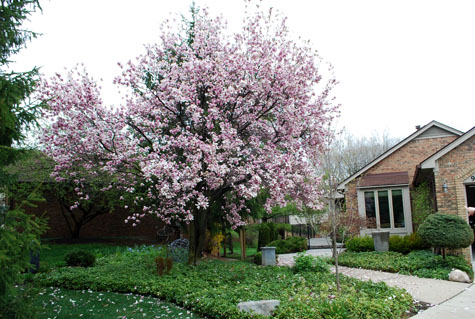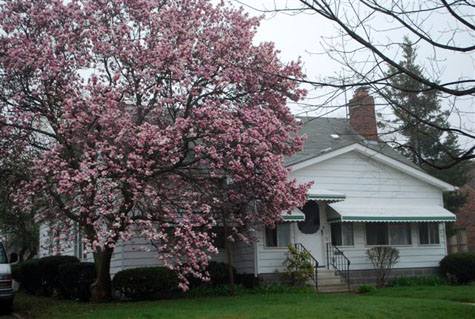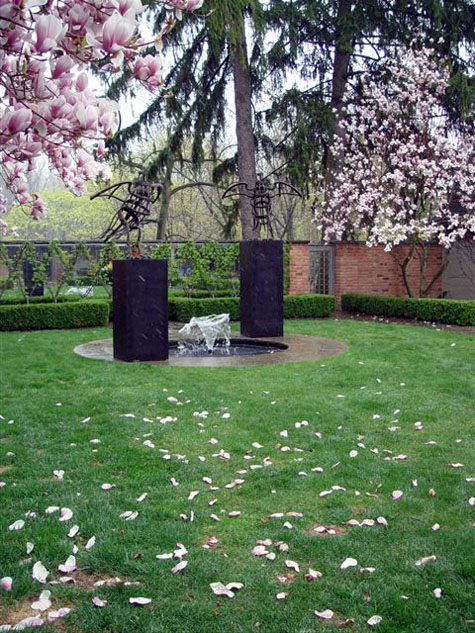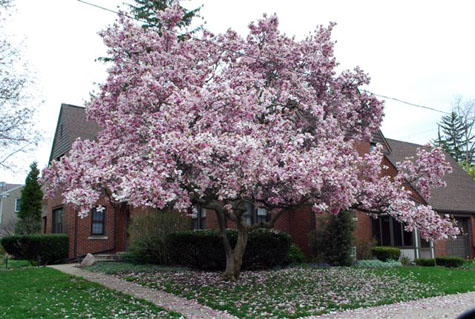
 Jane and Ken Cruickshank have been enthusiastic supporters of my store Detroit Garden Works, since it opened 13 years ago. I went out to her house last week to consult with her about her entry porch-more on the outcome of that later. But when I drove up to the house, I realized that I had designed and installed the landscape for a previous owner; I later determined that the gorgeous Magnolia Soulangiana had been planted some 22 years ago. Jane tells me this makes us family. I am glad there is existing proof of my intent to plant magnolias whenever I can; it is incredibly beautiful right now. But really the best part is that making landscapes has made for a kind of community-of which I am a member; gardens are good for people.
Jane and Ken Cruickshank have been enthusiastic supporters of my store Detroit Garden Works, since it opened 13 years ago. I went out to her house last week to consult with her about her entry porch-more on the outcome of that later. But when I drove up to the house, I realized that I had designed and installed the landscape for a previous owner; I later determined that the gorgeous Magnolia Soulangiana had been planted some 22 years ago. Jane tells me this makes us family. I am glad there is existing proof of my intent to plant magnolias whenever I can; it is incredibly beautiful right now. But really the best part is that making landscapes has made for a kind of community-of which I am a member; gardens are good for people.


 Everyone makes decisions about a life’s work. Whether they think it through, or not, decisions get made. As a landscape designer, I realized part of my life’s work was to plant magnolias-all manner of magnolias, every where it made good design sense to plant them. I am a designer who in part came to design via a love for plants. Plants are part of the vocabulary that helps give voice to a point of view. Every designer needs heart, soul, and nerve-but they also need language.
Everyone makes decisions about a life’s work. Whether they think it through, or not, decisions get made. As a landscape designer, I realized part of my life’s work was to plant magnolias-all manner of magnolias, every where it made good design sense to plant them. I am a designer who in part came to design via a love for plants. Plants are part of the vocabulary that helps give voice to a point of view. Every designer needs heart, soul, and nerve-but they also need language.
 Phil Savage, lived on almost 8 acres-most of which reflects a lifetime growing and hybridizing magnolias. He also grafted magnolia cuttings onto ash tree root stock-these trees are 70 feet tall on his property, as we speak. He hybridized “Yellow Butterflies”; when the spring weather is perfect, it is a dream come true in bloom. Later, it is sturdily and robustly green. His property had magnolias of a size, with flowers in colors, I have never seen-yellow, peach, orangy pink. It was like a visit to another planet. But no, just a visit to a man who knew and lived his life’s work.
Phil Savage, lived on almost 8 acres-most of which reflects a lifetime growing and hybridizing magnolias. He also grafted magnolia cuttings onto ash tree root stock-these trees are 70 feet tall on his property, as we speak. He hybridized “Yellow Butterflies”; when the spring weather is perfect, it is a dream come true in bloom. Later, it is sturdily and robustly green. His property had magnolias of a size, with flowers in colors, I have never seen-yellow, peach, orangy pink. It was like a visit to another planet. But no, just a visit to a man who knew and lived his life’s work.

